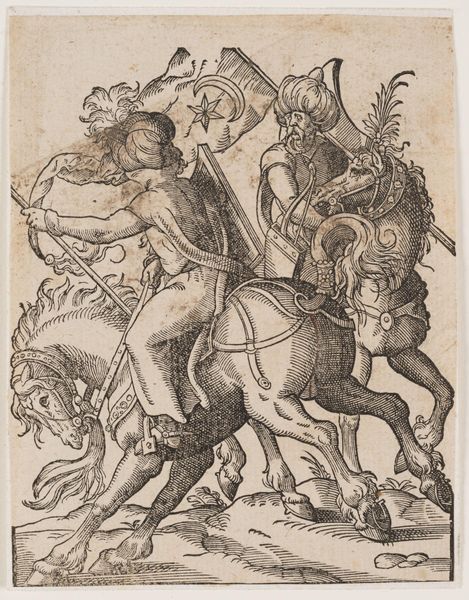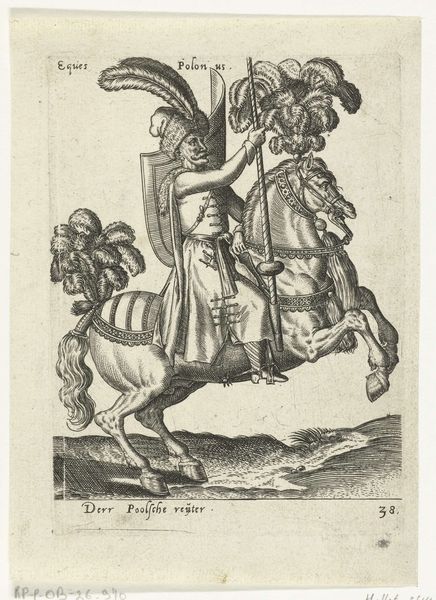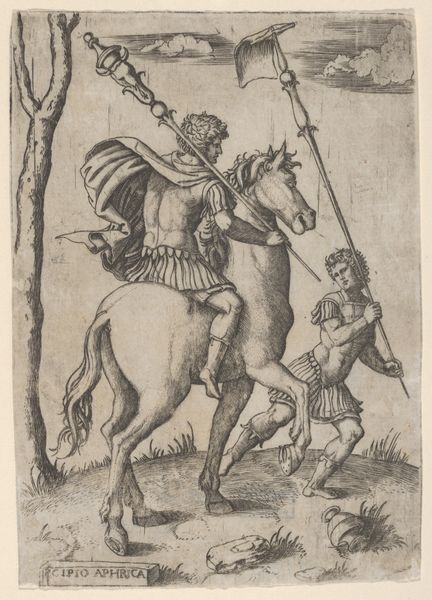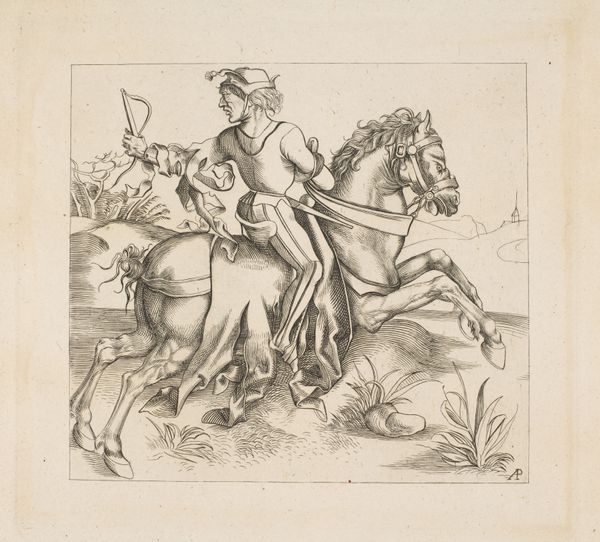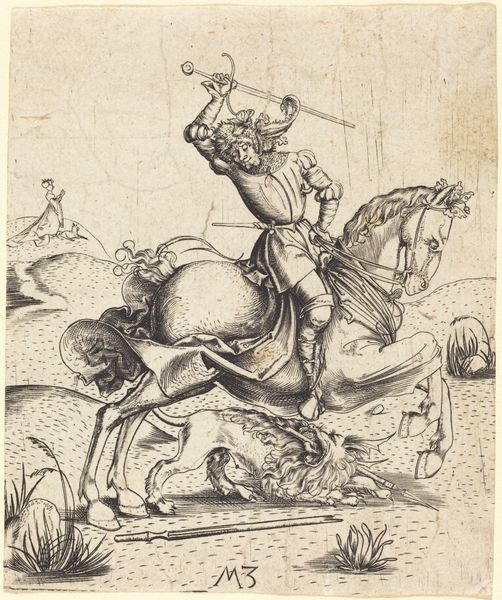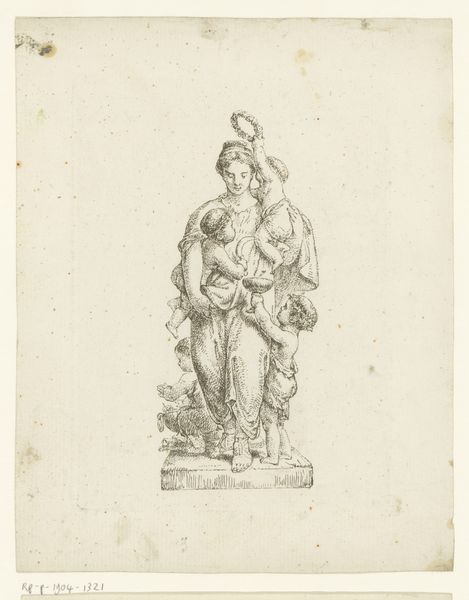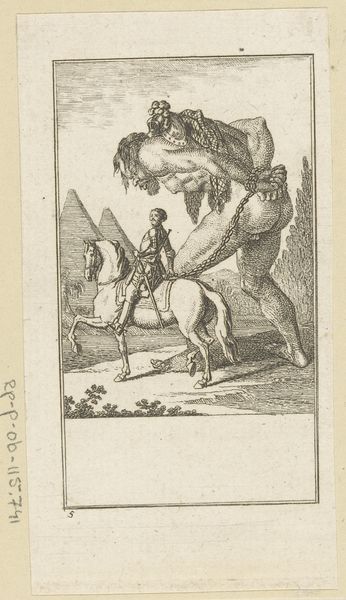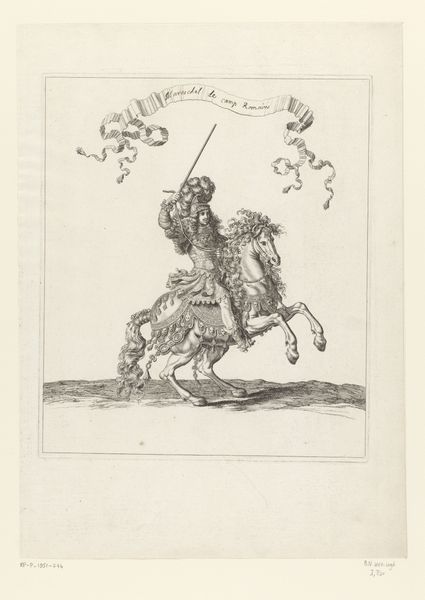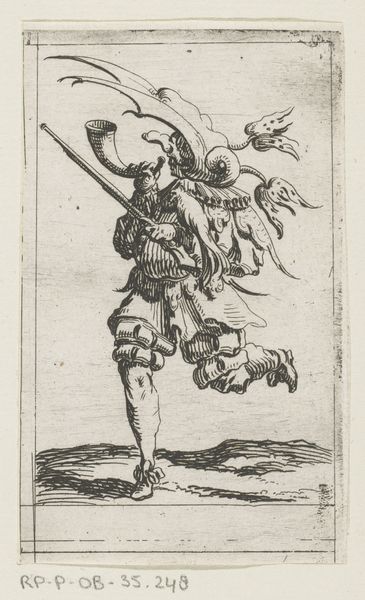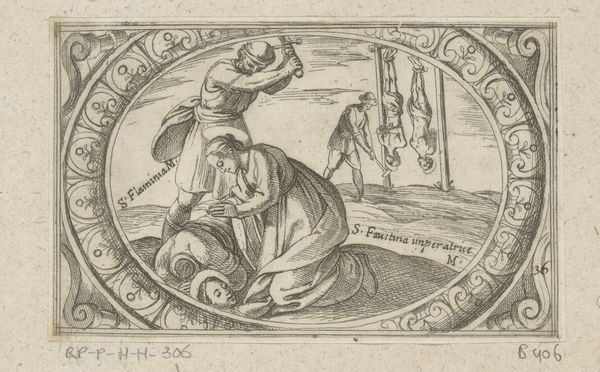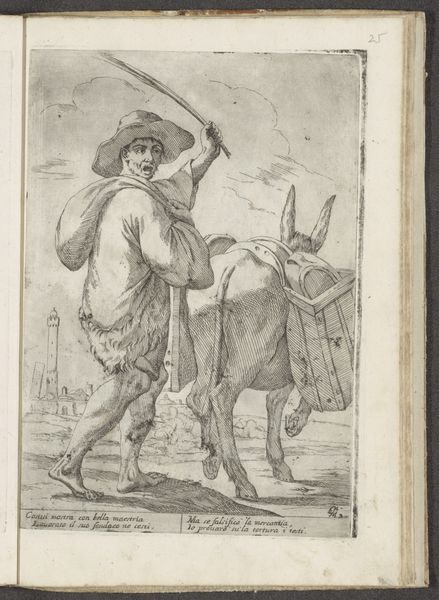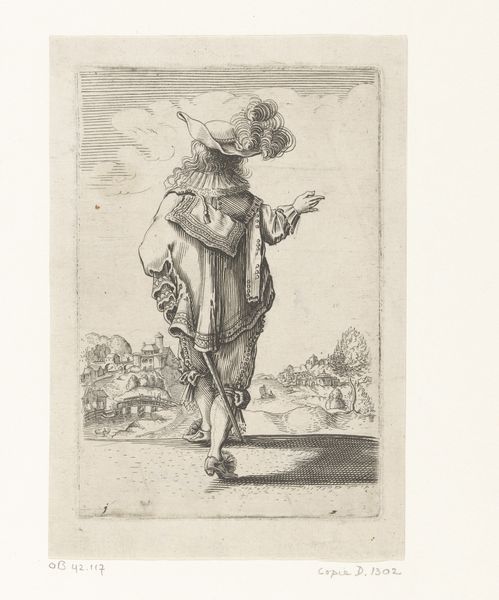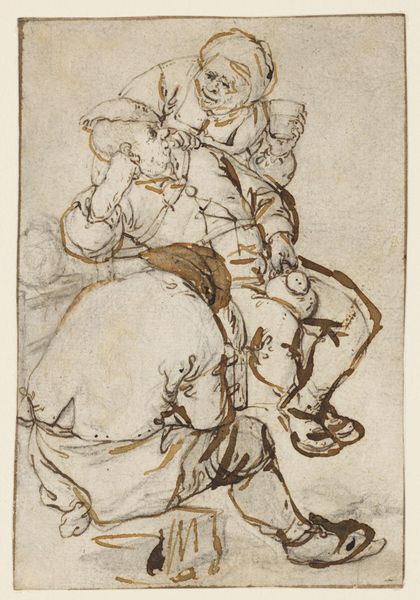
print, etching
#
narrative-art
#
baroque
# print
#
etching
#
caricature
#
old engraving style
#
figuration
#
islamic-art
#
genre-painting
Dimensions: height 274 mm, width 202 mm, height 399 mm, width 271 mm
Copyright: Rijks Museum: Open Domain
Curator: This print, titled "De arme draagt de rijke," or "The Poor Carry the Rich," was etched by Giuseppe Maria Mitelli around 1685 and is currently held in the Rijksmuseum collection. Editor: Its visual economy is striking. The lines are clean, creating an immediate contrast—the levity of the dandy perched atop the hunched figure. Curator: Precisely. Mitelli masterfully uses the etching technique to establish a clear hierarchy. Note the meticulous detail in the rich man’s attire – the elaborate hat, the puffy sleeves, the lute. This is juxtaposed against the stark, almost crude depiction of the burdened laborer. The composition leads our eye directly to the contrast in textures, almost opposing semiotic realms. Editor: It's an overt social commentary, really. The artwork acts as a symbol—an obvious representation of labor exploitation that permeates all socio-political layers. Look at the bent back of the poor man, digging while being ridden. His servitude quite literally facilitates the wealthy man's leisure. Curator: Certainly, and it's fascinating how the Baroque penchant for dynamism is employed here to further amplify the message. The diagonal line formed by the figures implies motion and emphasizes instability and the inherent power dynamic within such a system. It's almost performative. Editor: Indeed. The performance aspect connects it to class structures during this period—sumptuary laws dictate clothing choices, visually and economically differentiating those who profit from the labor of others. The dandy flaunts his assumed role with little or no self awareness of what it signifies, in the image itself or in society. Curator: And consider the script. A frame sets a stage. In essence, Mitelli crafts an open structure. Our individual perception brings meaning to it as if he simply made the mold from which new understandings continuously emerge. Editor: Which brings us back to today, doesn't it? "The Poor Carry the Rich" speaks volumes about entrenched social inequalities that persist even now. We have seen endless versions play out throughout art history: it reflects a continuous cycle. Curator: An evocative work, indeed. The artistic precision adds a sense of universality, as the ideas are constantly reframed to modern standards of economic discourse and interpretation.
Comments
No comments
Be the first to comment and join the conversation on the ultimate creative platform.
